I have always been fascinated by the unique behaviors and characteristics of ferrets. These small and playful creatures have a long history of domestication and have become beloved pets for many people. However, it is important to understand the territorial instincts of ferrets in order to properly care for them and ensure their well-being.
Domesticated ferrets were originally bred for the purpose of controlling vermin and protecting grain stores from rodent infestation. They have undergone physical and behavioral changes over time, becoming more social and gregarious compared to their wild counterparts. Despite their adorable appearance, ferrets still retain some of their instinctual behaviors, including territoriality.
Key Takeaways:
- Ferrets were domesticated for vermin control and have a long history dating back to ancient Greek and Roman times.
- The exact parent species of the domestic ferret is uncertain, but it is believed to have been domesticated from the European polecat or its eastern congener, the steppe polecat.
- Domestic ferrets differ behaviorally from their wild ancestors, the polecats, and are more social and gregarious.
- Ferrets exhibit behaviors such as biting, bottlebrush tail, hissing, defecation or urination when frightened or irritated.
- Understanding ferret body language is key to recognizing their emotions and intentions.
The History of Ferret Domestication
Ancient Greek and Roman writers, such as Aristophanes and Aristotle, made references to animals that fit the description of domesticated ferrets. It is believed that the Greeks domesticated the indigenous European polecat as a means of controlling vermin. The Normans later introduced ferrets to Britain, where they were used for hunting rabbits. Ferret domestication continued throughout history, with their popularity as pets increasing in the late 1960s.
“The Greeks were known to have tamed a wild animal resembling a polecat, which helped them control vermin.” – Aristophanes
The precise parent species of the domestic ferret is still uncertain, but it is thought to be either the European polecat or the steppe polecat.
Interested in knowing more about the history of ferret domestication? Take a look at the table below that highlights key milestones and events:
| Year | Event |
|---|---|
| Ancient times | Ancient Greek and Roman accounts mention domesticated animals resembling ferrets, possibly European or steppe polecats. |
| 500-1500 AD | Ferrets introduced to Britain by the Normans for rabbit hunting purposes. |
| Late 1960s | Rising popularity of ferrets as pets. |
Now, let’s dive deeper into the fascinating behaviors and characteristics of ferrets in the next section.
The Normans’ Impact on Ferret Domestication
The Normans played a crucial role in the spread of ferret domestication. They recognized the hunting skills of ferrets and utilized them for capturing rabbits, which were abundant in the British Isles. This practice contributed to the introduction of ferrets to Britain and their subsequent integration into human households.
Get ready to learn more about the behavior and unique traits of these adorable creatures. Section 3 will cover it all.
Ferret Behavior and Characteristics
Domesticated ferrets have distinct behavior patterns and characteristics that set them apart from their wild ancestors, the polecats. While polecats are typically solitary and territorial, domestic ferrets are social and gregarious creatures.
One of the key aspects of ferret behavior is their strong inclination towards socialization. Ferrets thrive on interaction and play activities with other ferrets. They engage in games of chase, wrestling, and even hide-and-seek, displaying their natural curiosity and energy. In fact, ferrets are known to form strong bonds with their fellow ferrets, often choosing to sleep together in cozy piles.
When it comes to their senses, ferrets have some interesting characteristics. Their vision is adapted for low light conditions, thanks to a specialized layer in their eyes called the tapetum lucidum. This allows them to see more effectively in dim environments. However, ferrets may struggle with vision in complete darkness or bright light situations.
Ferrets have binocular vision, which means their eyes work together to give them depth perception. Their pupils are horizontally slit, enhancing their ability to focus on objects with precision. Ferrets also have good visual acuity for close-range objects and can pay attention to complex visual stimuli.
To complement their vision, ferrets have acute hearing. They can detect a wide range of sounds, including ultrasonic frequencies. This heightened hearing allows them to be alert and aware of their surroundings, making it easier for them to communicate with other ferrets and perceive potential threats.
Common Behaviors of Ferrets
Ferrets display a variety of behaviors that may appear strange or even eccentric to their human companions. It is essential for ferret owners to understand these behaviors to ensure their pet’s well-being and maintain a harmonious bond. Let’s explore some of the most common behaviors exhibited by ferrets:
- Biting: Biting is often misunderstood by ferret owners. It is crucial to recognize that ferrets may bite out of playfulness or curiosity rather than aggression. Providing appropriate chew toys and positive reinforcement can help redirect their biting instincts.
- Bottlebrush Tail: A poofed-out tail, resembling a bottlebrush, is a visual clue that indicates a ferret’s irritation or fear. When a ferret feels threatened or uncomfortable, the tail fluffs up as a defense mechanism.
- Hissing: Hissing is a vocalization commonly associated with anger, frustration, or fear in ferrets. It serves as a warning signal to communicate their displeasure or discomfort.
- Defecation or Urination: When frightened, ferrets may exhibit involuntary defecation or urination. This behavior is a stress response and can occur during unfamiliar situations or in the presence of aggressive animals.
- Hoarding Small Objects: Ferrets have a natural instinct to hoard small objects. This behavior stems from their wild ancestors’ need to stash food for future consumption. It is important to ensure that the objects they hoard are safe and non-toxic.
- Clucking Sounds: Ferrets sometimes produce clucking sounds, similar to a chicken. These sounds are typically a sign of contentment or indicate that they are enjoying a comfortable, relaxed state.
- Dance of Joy or Weasel War Dance: A fascinating behavior, referred to as the “dance of joy” or “weasel war dance,” involves a series of quick hops, twists, and arches of the back. This dance showcases their excitement, energy, and playful nature.
Understanding these common behaviors allows ferret owners to decipher their pets’ language and respond appropriately. By providing a safe and stimulating environment, socialization with other ferrets, and regular playtime, owners can help their furry companions thrive.
Ferret Behaviors: An Insightful Table
| Behavior | Description |
|---|---|
| Biting | A result of playfulness or curiosity rather than aggression |
| Bottlebrush Tail | Poofed-out tail indicating irritation or fear |
| Hissing | Vocalization conveying anger, frustration, or fear |
| Defecation or Urination | Involuntary response when frightened or stressed |
| Hoarding Small Objects | Natural instinct to stash and collect small items |
| Clucking Sounds | Sounds indicating contentment and relaxation |
| Dance of Joy or Weasel War Dance | Playful dance showcasing excitement and energy |
Understanding Ferret Body Language
Ferrets are excellent communicators, using their body language to convey their emotions and intentions. By understanding their body language, you can develop a deeper connection with your furry friend and respond to their needs effectively.
Poofed-out Tail: Signaling Threat
When a ferret feels threatened or scared, they may poof out their tail, making it appear larger and more intimidating. This bottlebrush tail is a defense mechanism that serves as a visual warning to potential predators or aggressive individuals.
Hissing: Expressing Anger or Warning
Hissing is another way that ferrets communicate their emotions. If a ferret hisses at you, it’s a sign of anger, frustration, or fear. It’s their way of warning you to back off or to let them be.
Expressing Anal Sacs: Annoyance, Fear, or Excitement
When irritated, scared, or excited, ferrets may also poof their tails and express their anal sacs, which can emit a strong, pungent odor. This behavior is a form of communication to convey their emotions and establish boundaries.
In addition to these specific body language signals, ferrets may exhibit other behaviors that indicate their emotions and needs. These behaviors include biting (often playful or curious), defecation or urination (when frightened), and the use of their sense of smell to mark their territory.
To fully understand your ferret’s body language, it’s essential to spend time observing and interacting with them. With patience and attention, you’ll become attuned to their subtle cues and develop a stronger bond with your pet.
| Body Language Signal | Meaning |
|---|---|
| Poofed-out Tail | Threat or fear |
| Hissing | Anger or warning |
| Expressing Anal Sacs | Annoyance, fear, or excitement |
| Biting | Playfulness or curiosity |
| Defecation or Urination | Fear or submission |
| Sense of Smell | Marking territory |
Conclusion
Understanding the territorial instincts of ferrets is crucial for their proper care and handling. While they may exhibit behaviors that seem odd or crazy to humans, these behaviors are perfectly normal for ferrets. By recognizing and interpreting their body language and behaviors, ferret owners can better understand and meet their needs.
From their ancient history of domestication to their playful and social nature, ferrets continue to fascinate and captivate those who appreciate their unique characteristics. It is important to remember that ferrets were domesticated for a specific purpose and have retained certain behaviors associated with their ferret behavior. By understanding their territorial instincts, owners can ensure a safe and enriching environment for their furry companions.
Whether they are engaging in the dance of joy, displaying a poofed-out (bottlebrush) tail, or hissing to convey their emotions, it is important to respect and acknowledge these behaviors as natural expressions of a ferret’s needs and instincts. With patience and understanding, ferret owners can build a strong bond with their pets and create a harmonious living environment.
FAQ
What is the history of ferret domestication?
Ferrets were domesticated for the purpose of controlling vermin and protecting grain stores from rodent infestation. The earliest written accounts of domesticated ferrets date back to ancient Greek and Roman times. The exact parent species of the domestic ferret remains uncertain, but it is believed to have been domesticated from the European polecat or its eastern congener, the steppe polecat.
How do domesticated ferrets differ from their wild ancestors?
Domesticated ferrets have undergone physical and behavioral changes as a result of human selection. While wild polecats tend to be solitary and territorial, domestic ferrets are social and gregarious. They enjoy play activities with other ferrets and prefer to sleep with conspecifics.
What are some common behaviors exhibited by ferrets?
Ferrets may exhibit behaviors such as biting, poofing out their tails, hissing, defecation or urination when frightened, hoarding small objects, making clucking sounds, and engaging in the dance of joy or the weasel war dance.
How do ferrets communicate through body language?
Ferrets communicate through their body language, providing cues about their emotions and intentions. A poofed-out tail is a ferret’s attempt to appear larger and scarier in response to a threat, while hissing conveys anger or serves as a warning signal. Ferrets may also poof their tails and express their anal sacs when annoyed, scared, or excited.
Why is understanding territorial instincts important for ferret care?
Understanding the territorial instincts of ferrets is crucial for their proper care and handling. By recognizing and interpreting their body language and behaviors, ferret owners can better understand and meet their needs.

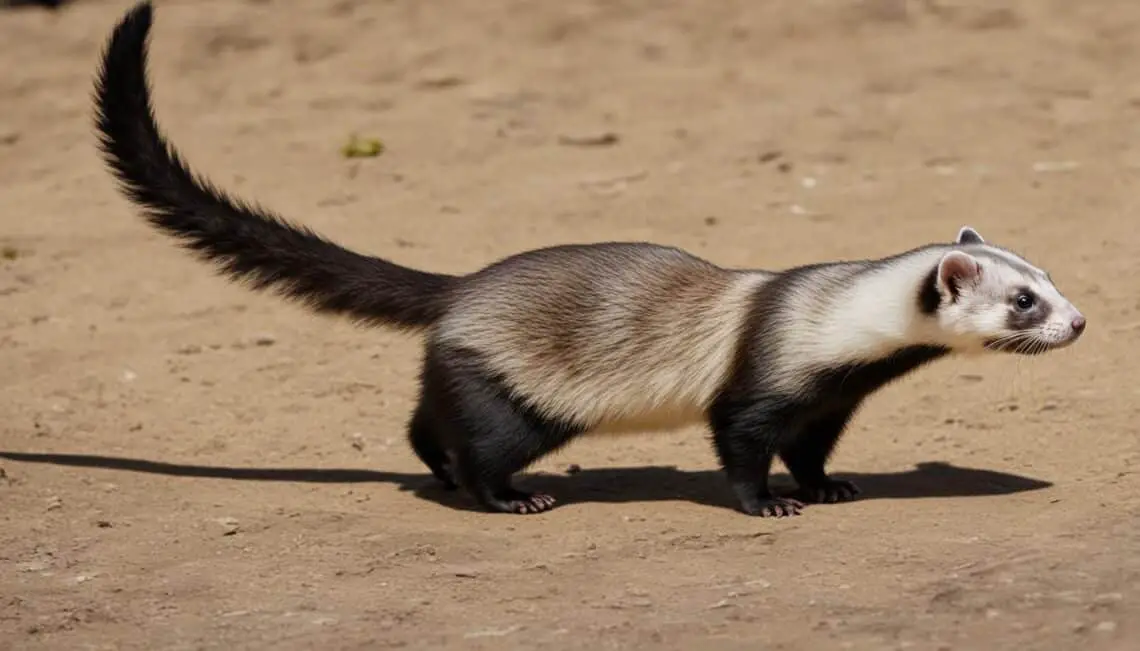
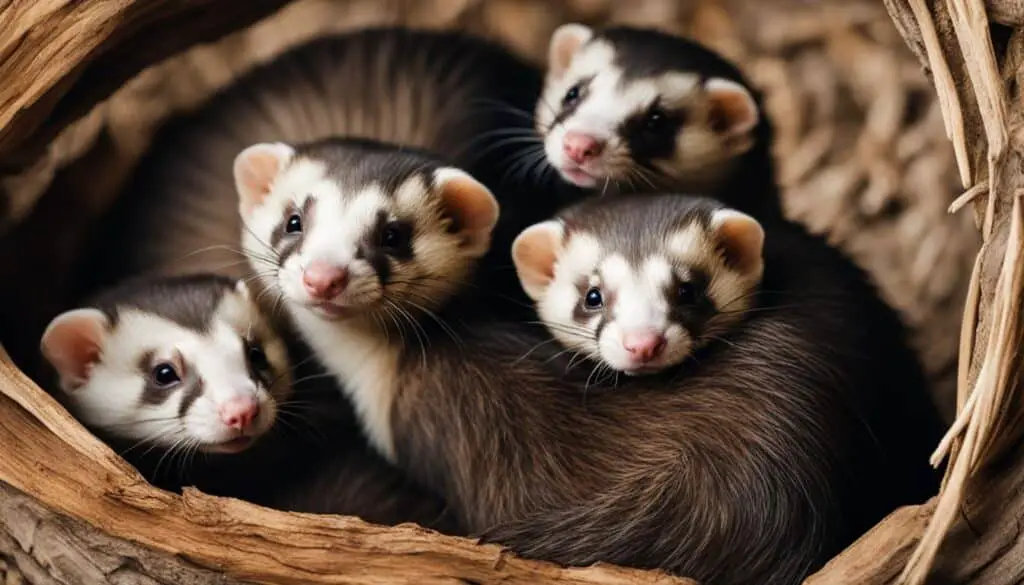
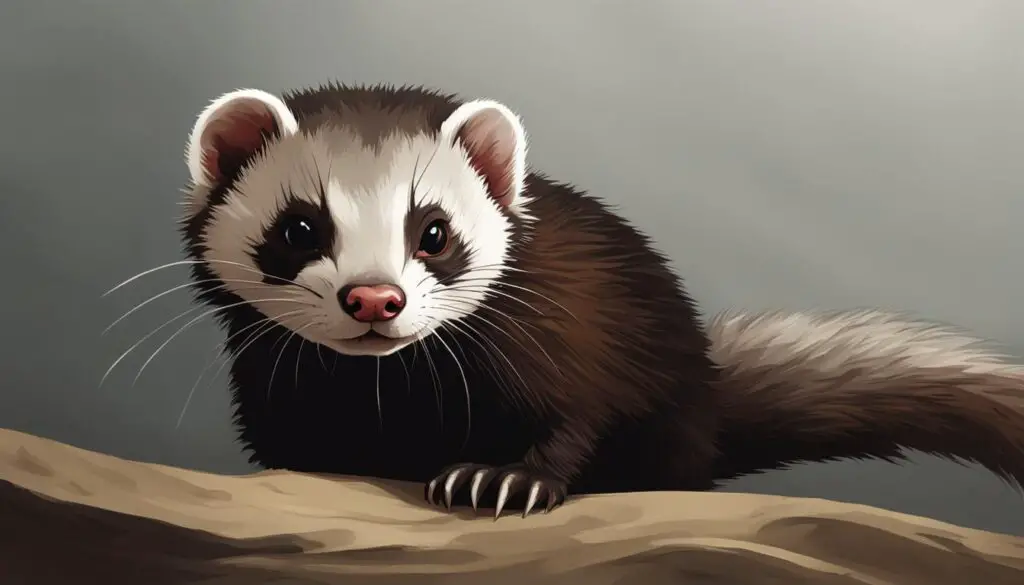
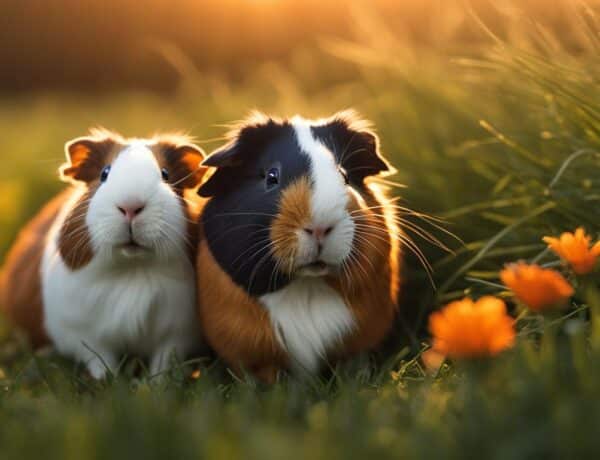
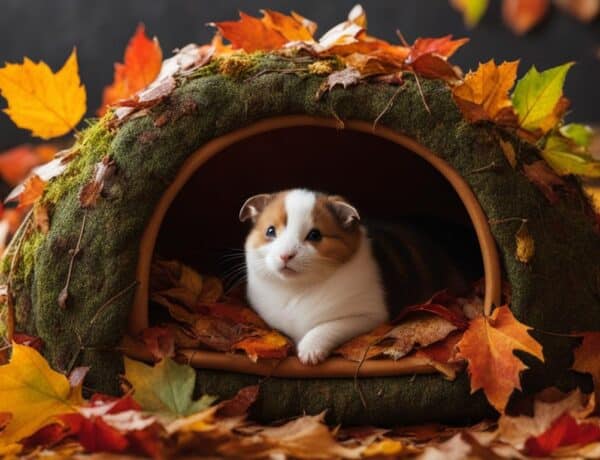

No Comments